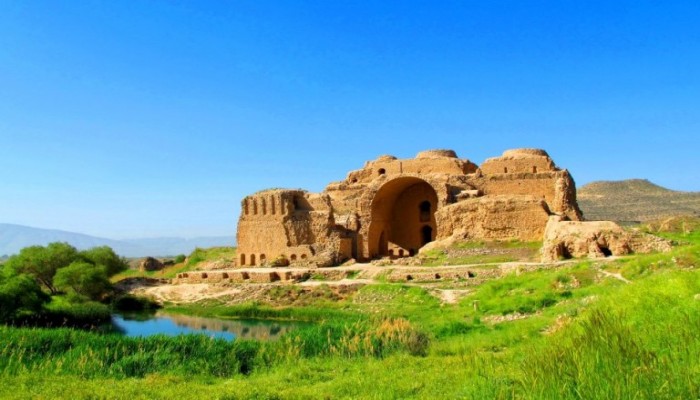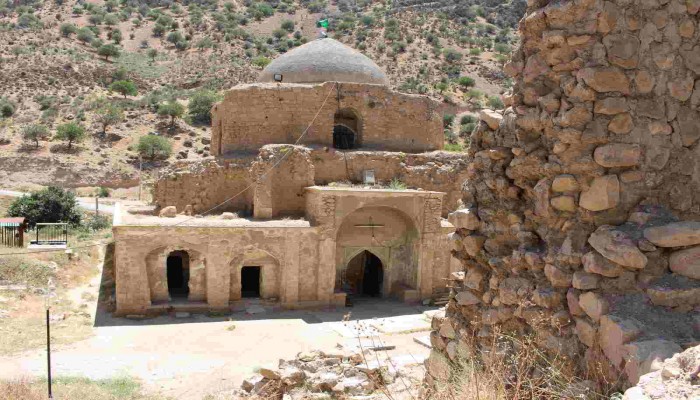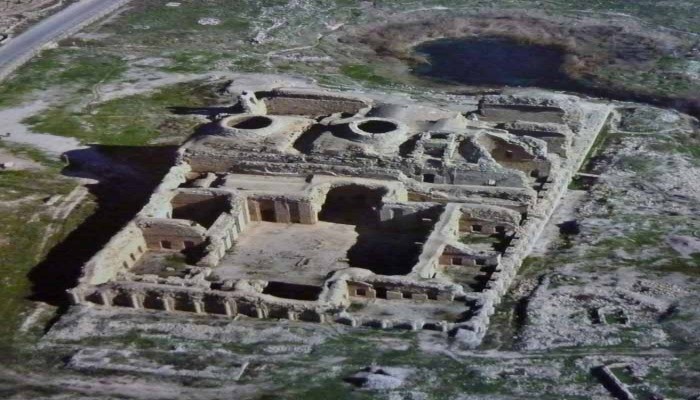The original ancient city of Gor, dating back to the Achaemenid period, was destroyed by Alexander. Centuries later, Ardashir I, the founder of the Sassanian Empire, revived the city before it was ransacked during the Arab Muslim invasion of the seventh century. It was again revived by the Buyids, but was eventually abandoned in the Qajar period and was replaced by a nearby town, which is now Firuzabad.
Gor dates back to the Achaemenid era. It was situated in a low-lying area of the region, so, during his invasion of Persia, Alexander was able to drown the city by directing the flow of a river into the city. The lake he created remained until Ardashir I built a tunnel to drain it. He founded his new capital city on this site.
Ardashir's new city was known as Khor Ardashīr, Ardashīr Khurrah and Gōr. It had a circular plan so precise in measurement that the Persian historian Ibn Balkhi wrote it to be "devised using a compass". It was protected by a trench 50 meters in width, and was 2 kilometers in diameter. The city had four gates; to the north was the Hormozd Gate, to the south the Ardashir Gate, to the east the Mithra Gate and to the west the Wahram Gate. The royal capital's compounds were constructed at the center of a circle 450 m in radius. At the center of the town there was a lofty platform or tower, called Terbal. It was 30 m high and spiral in design. The design is unique in Iran, and there are several theories regarding the purpose of its construction. It is thought to have been the architectural predecessor of the Great Mosque of Samarra of Iraq.
Gor and Istakhr strenuously resisted the invading Arab Muslims in the 630s and 640s; they were conquered by Abdallah ibn Amr in 649-50.
The city's importance was revived again in the reign of Adud al-Dawla of the Buyid dynasty, who frequently used the city as his residence. It is at this time that the old name of the city, Gōr, was abandoned in favor of the new. In New Persian, spoken at the time, the word Gōr (گور) had come to mean "grave." King Adud al-Dawla, as the story goes, found it distasteful to reside in a "grave." Per his instruction, the city's name was changed to Peroz-abad, "City of Victory.
The city was eventually abandoned in Qajar period and its nearby settlement was populated, which is now the modern Firuzabad located 3 km to the east of the site of Gor.Today, among the attractions of Firuzabad are the Sassanid Ghal'eh Dokhtar, the Palace of Ardeshir, and the fire temple and its nearby Minar.






